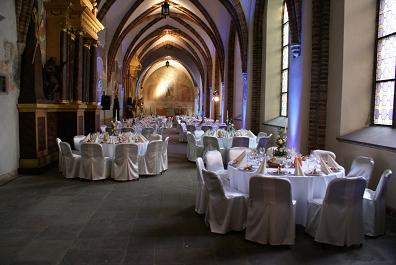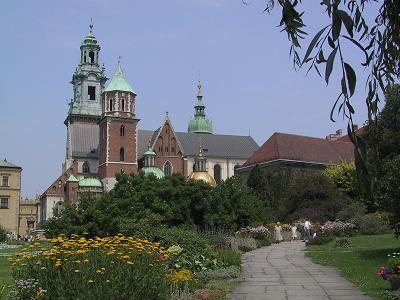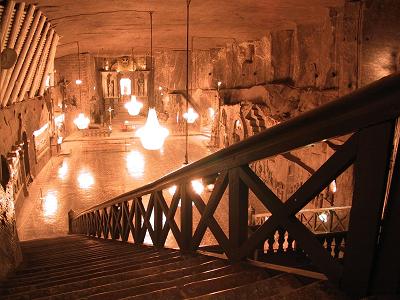Social Programme
Welcome Reception and Poster Session
Sunday, 23 September 2012, 17:30Auditorium Maximum
Registration is required (free of charge)
Congress Dinner
Tuesday, 25 September 2012, 19:30-23:00Franciscan Church, Franciszkanska 2
see map for details

Picture by permission of Gastro-Tour Serwis , Cracow.
(Cited from www.cracow-life.com)
The Franciscan Order arrived in Cracow in 1237. A monastery was founded on this site, and in 1260 work began on a church.
Whilst there is plenty of interesting history behind this church, it was a disaster, that gave rise to its greatest legacy. In 1850 a fire tore its way through the Old Town, causing major damage to a host of buildings. The Franciscan Church was amongst several that were gutted, and rebuilding had to begin from scratch. This was done in the Gothic style, to mirror the former design. Amongst the most striking features of the church are the stained glass windows. Bold and visionary, they are a world away from the staid traditions of the medieval era. Most famous is the huge 'Let it Be', which stands above the Western entrance.
For centuries the Franciscans held the special right of pardon over those under the death sentence. However, in contrast with the radically innovative art of the interior, the church is today notable for its conservatism. The Dominican, on the other hand, which lies just over the road, has a liberal reputation and is popular with students.
The experience of the Franciscan church is naturally at its most spellbinding during the Mass, when the aroma of incense hangs in the air, and the lights do full justice to the brilliance of Wyspianski's designs. The chief chorister, a sterling member of the fairer sex, has a highly uplifting voice that makes a very powerful impact. There are also regular concerts here - and what a fine venue - for this is certainly a church in a million.
Registration is required
Price: 70 Euro including drinks
Guest Tours:
Sunday,
23 September 2012:
The Highlights of the route: 1 - the Medieval Fortification system with the Barbican (a masterpiece of Gothic military architecture) 2 - architectural monuments like Sukiennice (the Cloth Hall, a main focus of Cracow's trade) 2 - the Market Square (one of the biggest and the most beautiful square in Europe) 3 - St Mary's Basilica (impressive brick gothic church, the main city parish) 4 - the University district 5 - Bishops Palace with John Paul II window - 'Papal Window' 6 - Grodzka Street 7 - the Wawel Castle and the Royal Cathedral Price: 30 Euro/Person Departure: 11:00 at the Auditorium Maximum Duration: approx. 3-4 h |  |
 | Monday, 24 September 2012: The
Auschwitz-Birkenau Museum The former
concentration and extermination camp of
Auschwitz-Birkenau was the largest in the Third Reich. It is a place,
where
Jews, Gypsies, Poles and members of other ethnic groups and
nationalities were murdered in the Holocaust.
Although
sightseeing in the Museum may be a traumatic experience, it is a duty
of each
human being to pay homage to the victims of the Nazi.
|
Tuesday, 25 September
2012:
Wieliczka Salt Mine (Bus Tour)Wieliczka "salt
empire" is the only site in the world where
mining has continued since the Middle Ages. In 1978 the Wieliczka Salt
Mine was
included on the very first UNESCO World Heritage List. It is visited
each year
by over a million tourists from around the world. Spread over nine
levels, it
has 300 km of galleries with works of art, altars, and statues sculpted
in the
salt. Highlights of the route:
Departure: 09:00 at the Auditorium Maximum Duration: approx. 3-4 h |  |
